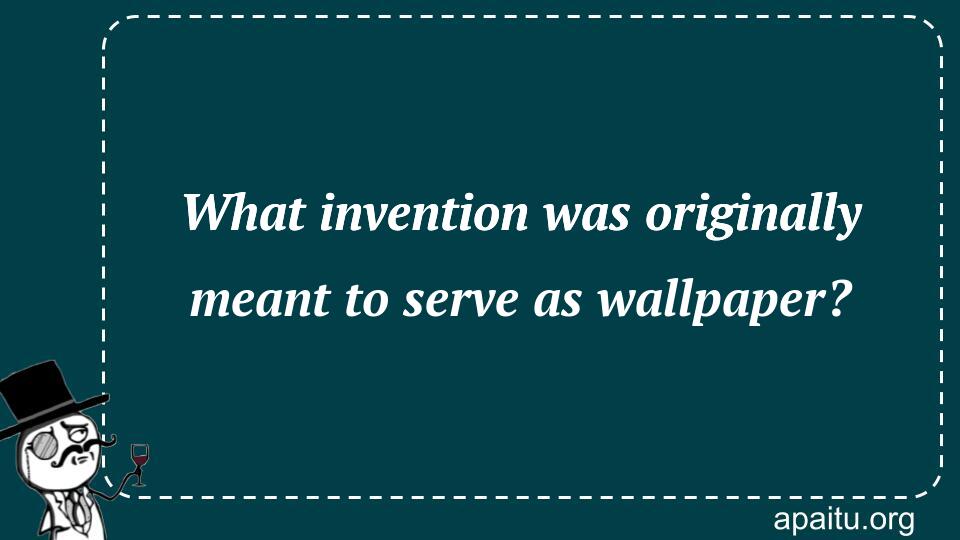Question
Here is the question : WHAT INVENTION WAS ORIGINALLY MEANT TO SERVE AS WALLPAPER?
Option
Here is the option for the question :
- Sandpaper
- Kevlar
- Astroturf
- Bubble wrap
The Answer:
And, the answer for the the question is :
Explanation:
In 1957, Alfred Fielding and Marc Chavannes used a heat-sealing machine to join two sections of plastic shower curtain together, after which they injected air bubbles into the resulting structure. They aimed to design a textured, three-dimensional wallpaper that would be appealing to members of the Beat generation. The product was not well received by homeowners when it was hung on their walls, but it would go on to become an industry standard in the field of packaging.

Bubble wrap is a ubiquitous packaging material that is known for its distinctive texture and satisfying popping sound. However, few people realize that bubble wrap was not originally intended for use as a packaging material at all. In fact, the invention of bubble wrap was inspired by an entirely different product: wallpaper.
Bubble wrap was invented in 1957 by engineers Marc Chavannes and Alfred Fielding, who were attempting to create a three-dimensional textured wallpaper. The duo sealed two shower curtains together, creating pockets of air between the layers. While the resulting wallpaper was not a commercial success, Chavannes and Fielding realized that their invention had potential in other applications.
The pair began experimenting with different materials and designs, eventually settling on a design featuring rows of small air-filled bubbles. They initially marketed the product as “AirCap,” and it quickly gained popularity as a packaging material due to its ability to protect fragile items during shipping.
Over the years, bubble wrap has become one of the most widely used packaging materials in the world, with billions of square feet produced each year. Its distinctive texture and popping sound have made it a favorite among children and adults alike, with some people even using bubble wrap as a stress-relieving tool.
bubble wrap has also found a variety of other applications. It has been used in the construction industry as a form of insulation, and has even been used in medical applications as a cushioning material for delicate medical equipment.
bubble wrap is not without its environmental drawbacks. The material is made from plastic and is not biodegradable, meaning that it can contribute to plastic pollution if not disposed of properly. However, some manufacturers have begun producing eco-friendly versions of bubble wrap, using materials such as recycled plastic or biodegradable materials to create a more sustainable product.
bubble wrap is a prime example of how a failed invention can lead to unexpected success. While it may not have found a place in the world of wallpaper, bubble wrap has become an indispensable part of the packaging industry, providing protection and peace of mind to millions of people around the world. And who knows? Maybe one day we’ll see a resurgence of textured wallpaper, inspired by the unlikely success of bubble wrap.